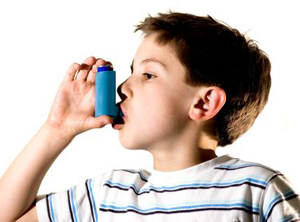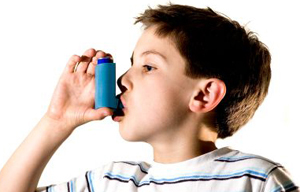Examining the Effects of Air Pollution on Asthmatic Children in Fresno, CA
Clients
California Air Resources Board (ARB)
University of California, Berkeley (UCB)
U.S. Environmental Protection Agency (EPA)
National Institute of Health
The Fresno Asthmatic Children's Environment Study (FACES) is designed to analyze the effects of air pollution on asthmatic children aged 6 to 16 years living in Fresno, California. A group of approximately 315 asthmatic children were monitored from 2001 to 2008 to evaluate the effects of daily air pollution levels on short-term asthma, to assess the influence of short-term asthma exacerbation on the progression of childhood asthma over the course of several years, and to evaluate the extent to which other environmental factors (such as tobacco smoke, allergens, and other bioaerosols) and housing characteristics influence asthmatic children's response to air pollution. Sonoma Technology performed the exposure assessment element of the study, which involved study design, ambient air quality measurements, housing and time-activity surveys, residential and school air pollution sampling, and exposure modeling. A one-year intensive sampling program was deployed to collect measurements of indoor and outdoor particulate matter mass and chemical constituents, nitrogen dioxide, ozone, polycyclic aromatic hydrocarbons, endotoxins, pollens, spores, and environmental tobacco smoke. Mobile vans provided detailed exposure information for schools and exposure models were developed to estimate children’s daily exposure to air pollution. Extensive analyses of the spatial and temporal characteristics of pollution and health effects in Fresno are being conducted.
<br>
Key findings from the study include:<ul>
<li>Exposure of asthmatic children living in Fresno to higher levels of NO<sub>2</sub> and coarse particles (2.5 to 10 µm diameter) increases their risk of wheeze. Children with atopy to cat dander or common fungi and boys with mild intermittent asthma are the subgroups at greatest risk.</li>
<li>Exposure to traffic-related pollutants is associated with reduced lung function in asthmatic children. Whether NO<sub>2</sub> has an independent effect on lung function or is a surrogate for the traffic pollution mix remains to be determined.</li>
<li>The spatial variability of pollutant concentrations in Fresno is highest for primary species such as NO, CO, endotoxin, and selected PM<sub>10</sub> trace elements (e.g., Al, Co, Ti, Cu); moderate for PM<sub>2.5</sub>, PMc, PM<sub>10</sub>, NO<sub>2</sub>, EC, OC, Si, Ca, Fe, Br, Mn, K, and Zn; and low for ozone and SO<sub>4</sub>.</li>
<br>
Key findings from the study include:<ul>
<li>Exposure of asthmatic children living in Fresno to higher levels of NO<sub>2</sub> and coarse particles (2.5 to 10 µm diameter) increases their risk of wheeze. Children with atopy to cat dander or common fungi and boys with mild intermittent asthma are the subgroups at greatest risk.</li>
<li>Exposure to traffic-related pollutants is associated with reduced lung function in asthmatic children. Whether NO<sub>2</sub> has an independent effect on lung function or is a surrogate for the traffic pollution mix remains to be determined.</li>
<li>The spatial variability of pollutant concentrations in Fresno is highest for primary species such as NO, CO, endotoxin, and selected PM<sub>10</sub> trace elements (e.g., Al, Co, Ti, Cu); moderate for PM<sub>2.5</sub>, PMc, PM<sub>10</sub>, NO<sub>2</sub>, EC, OC, Si, Ca, Fe, Br, Mn, K, and Zn; and low for ozone and SO<sub>4</sub>.</li>
Related Links:
Air Quality
Applied Research
Exposure
Health


Frederick W. Lurmann

Frederick
W.
Lurmann
Manager of Exposure Assessment Studies
fred@sonomatech.com
/sites/default/files/2023-02/FWLres.pdf
